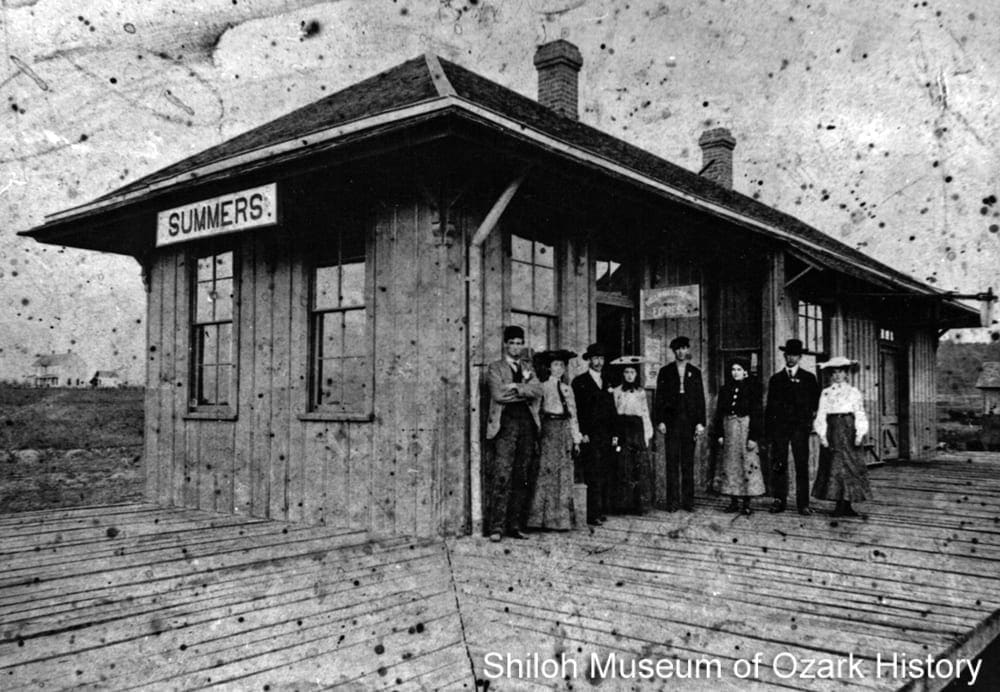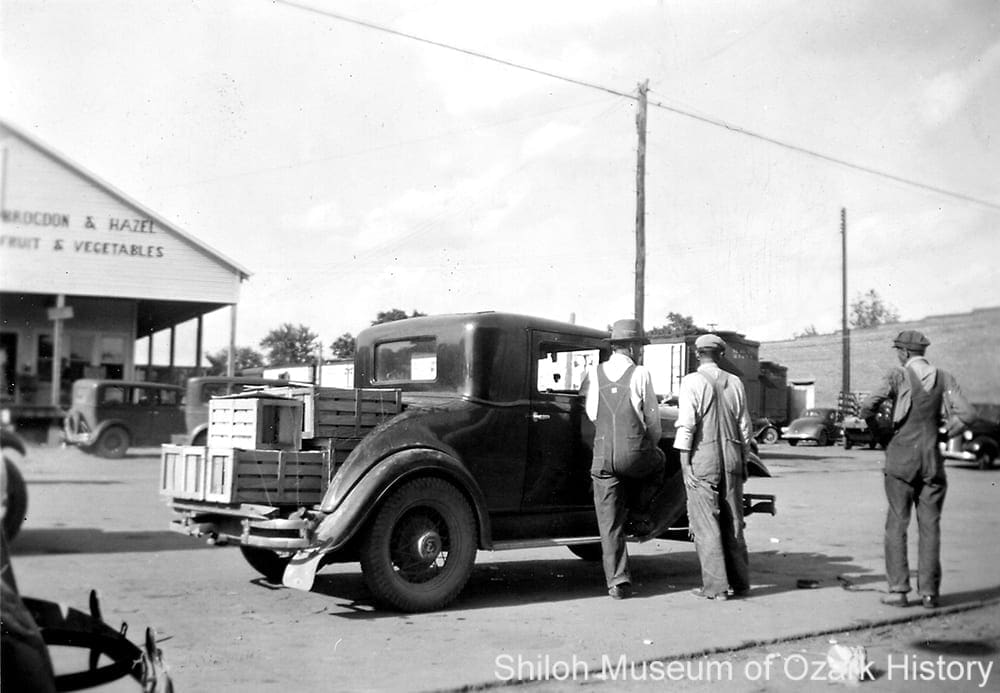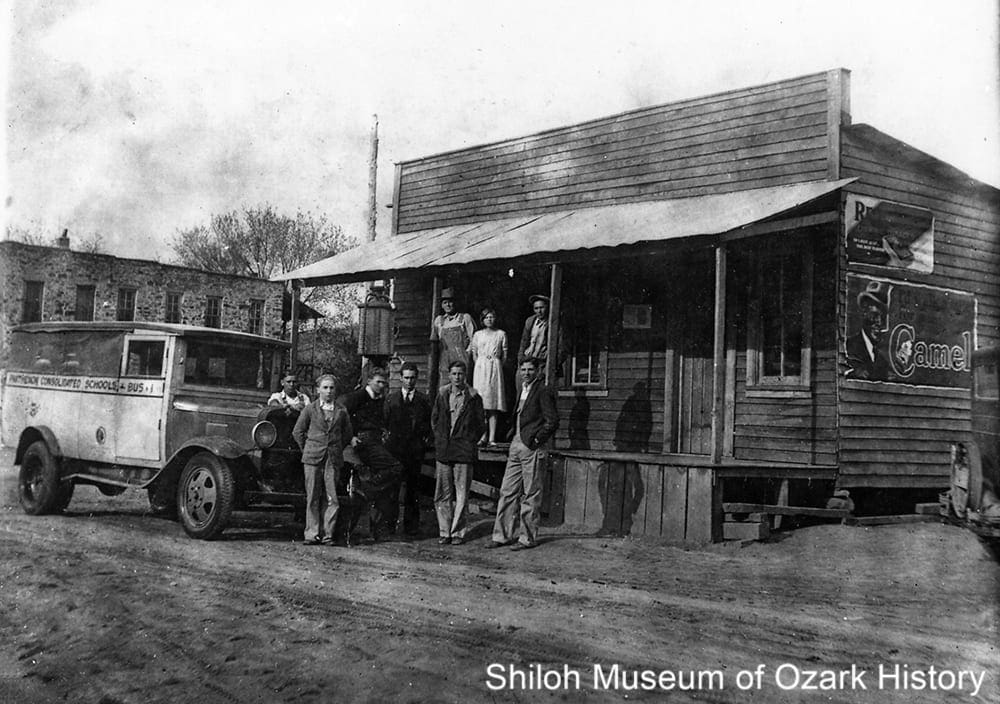Summers Depot
Ozark & Cherokee Central (O&CC)/Frisco Muskogee Branch Railway depot, Summers (Washington County), early 1900s. Constructed 1901–1903, the O&CC connected Fayetteville and Okmulgee, Indian Territory (Oklahoma). The O&CC was leased by the Frisco Railroad in 1903 and merged with the Frisco in 1907. The line became known as the Frisco Muskogee Branch. Passenger service on the Muskogee Branch ended in 1940; all rail operations between Fayetteville and Fort Gibson (just outside Muskogee) ended in 1942 and the tracks were pulled up to provide scrap metal for the war effort.
Jerry Risley Collection (S-87-343-2)
Ozark & Cherokee Central (O&CC)/Frisco Muskogee Branch Railway depot, Summers (Washington County), early 1900s. Constructed 1901-1903, the O&CC connected Fayetteville and Okmulgee, Indian Territory (Oklahoma). The O&CC was leased by the Frisco Railroad in 1903 and merged with the Frisco in 1907. The line became known as the Frisco Muskogee Branch. Passenger service on the Muskogee Branch ended in 1940; all rail operations between Fayetteville and Fort Gibson (just outside Muskogee) ended in 1942 and the tracks were pulled up to provide scrap metal for the war effort.
Jerry Risley Collection (S-87-343-2)




